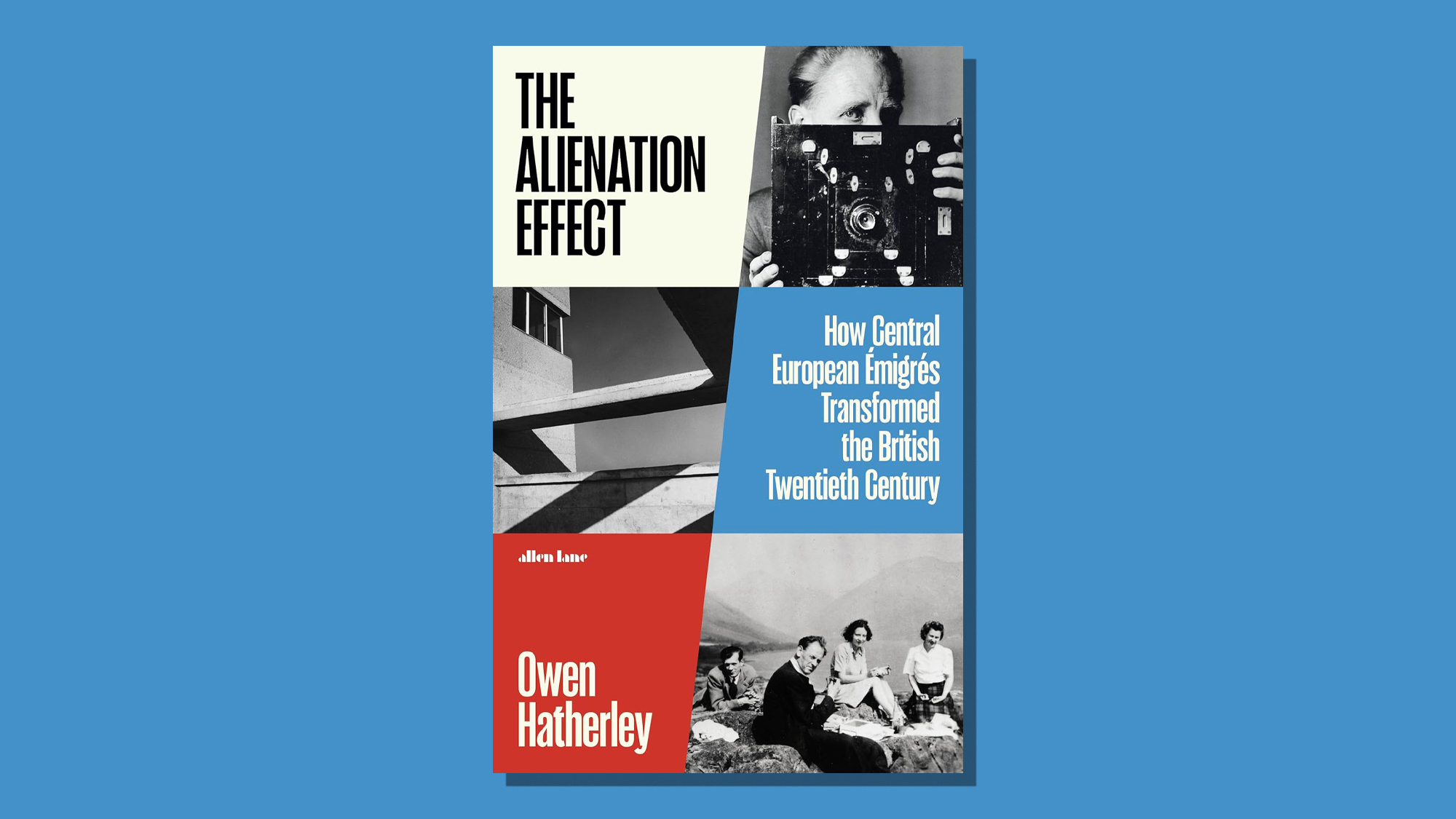The Alienation Effect: a 'compelling' study of the émigrés who reshaped postwar Britain
Owen Hatherley's 'monumental' book is brimming with 'extraordinary revelations'

"Between 1933 and 1940, about 100,000 refugees from central Europe came to Britain to escape the nightmare of fascism," said Christopher Turner in Literary Review. Mostly Jewish, many were also left-wing and artistically inclined. The influx included "exiles from the Bauhaus, a design school shuttered by the Nazis"; art historians Ernst Gombrich and Nikolaus Pevsner; writers Elias Canetti and Arthur Koestler; and architects Ernö Goldfinger and Berthold Lubetkin.
In this "well-researched and monumental" study, Owen Hatherley looks at the impact these émigrés had on "stagnant, stale Britain". Many, he argues, were culturally transformative, bringing avant-garde ideas to painting, photography and architecture. "Crammed with extraordinary revelations" – such as the fact that Jerry Springer grew up in a north London modernist building designed by Sigmund Freud's son – "The Alienation Effect" makes a "compelling case for immigration as a national lifeforce".
The émigrés homed in on an enclave around northwest London focused on Hampstead and the Finchley Road ("Finchleystrasse"), said Rupert Christiansen in The Daily Telegraph. But they weren't insular: many were intensely interested in what Hatherley calls the "strangeness of England". Bill Brandt took "eerie photographs" of working-class communities in the northeast; Pevsner documented English architecture in his "epic" "The Buildings of England". There were filmmakers – Michael Powell's Hungarian collaborator Emeric Pressburger; the animator Lotte Reiniger – as well as influential book designers and publishers. The "trailblazing publishing houses" Phaidon and Thames & Hudson were both the "brainchildren of émigrés".
The Week
Escape your echo chamber. Get the facts behind the news, plus analysis from multiple perspectives.

Sign up for The Week's Free Newsletters
From our morning news briefing to a weekly Good News Newsletter, get the best of The Week delivered directly to your inbox.
From our morning news briefing to a weekly Good News Newsletter, get the best of The Week delivered directly to your inbox.
The newcomers "didn't exactly get a warm welcome", said Pratinav Anil in The Guardian. The Daily Mail fulminated about "stateless Jews", and a third were interned as "enemy aliens" on the Isle of Man in 1940. Yet despite this, many made permanent homes in England, drawn to the fact that it was peaceable and conservative and had, as Hatherley writes, "somehow sat out the 20th century".
Although often under-credited and under-recognised, this diaspora had a lasting impact on British cultural life, said Rowan Moore in The Observer. We owe to them, in whole or part, "the Royal Festival Hall, Penguin Books and 'The Tiger Who Came to Tea'". While an "occasionally chewy read", Hatherley's book is mostly an "acute, informative, passionate and witty" tribute to "achievement in the face of adversity".
A free daily email with the biggest news stories of the day – and the best features from TheWeek.com
-
 The best homes of the year
The best homes of the yearFeature Featuring a former helicopter engine repair workshop in Washington, D.C. and high-rise living in San Francisco
-
 Critics’ choice: The year’s top 10 movies
Critics’ choice: The year’s top 10 moviesFeature ‘One Battle After Another’ and ‘It Was Just an Accident’ stand out
-
 A luxury walking tour in Western Australia
A luxury walking tour in Western AustraliaThe Week Recommends Walk through an ‘ancient forest’ and listen to the ‘gentle hushing’ of the upper canopy
-
 Joanna Trollope: novelist who had a No. 1 bestseller with The Rector’s Wife
Joanna Trollope: novelist who had a No. 1 bestseller with The Rector’s WifeIn the Spotlight Trollope found fame with intelligent novels about the dramas and dilemmas of modern women
-
 Appetites now: 2025 in food trends
Appetites now: 2025 in food trendsFeature From dining alone to matcha mania to milk’s comeback
-
 Man vs Baby: Rowan Atkinson stars in an accidental adoption comedy
Man vs Baby: Rowan Atkinson stars in an accidental adoption comedyTalking Point Sequel to Man vs Bee is ‘nauseatingly schmaltzy’
-
 Goodbye June: Kate Winslet’s directorial debut divides critics
Goodbye June: Kate Winslet’s directorial debut divides criticsTalking Point Helen Mirren stars as the terminally ill English matriarch in this sentimental festive heartwarmer
-
 A Christmas Carol (or two)
A Christmas Carol (or two)The Week Recommends These are the most delightful retellings of the Dickens classic from around the country


